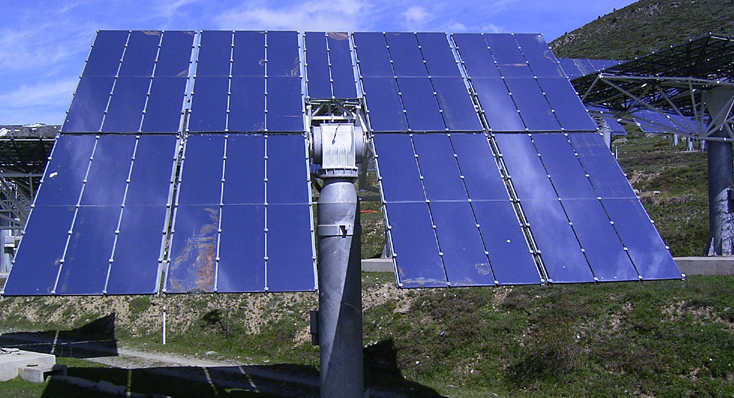The Mojave Desert is home to lizards, rare desert tortoises, and yucca trees among others. Thanks to its elevation and climate, this desert region receives a reliable supply of sunlight around 350 days every year. Soon the Mojave Desert will also be home to the world’s largest solar thermal plant, the Ivanpah, which will be completed this year.
The Ivanpah project is capable of generating nearly 400 MW of electricity, enough to power 140,000 homes. Its power output eclipses those of Andusol, Extresol, or Solnava power stations in Spain, previously the largest in the world with a capacity of 150 MW each.
Ivanpah accomplishes its massive power output through a network of “heliostats” mirrors spread across an area in the Ivanpah Valley of the Mojave Desert. These heliostat mirrors are software-controlled to follow the sun during the day. Measuring about 70 square feet, the heliostat mirrors concentrate and reflect sunlight onto 3 centrally positioned towers which hold boilers. As the water-filled boilers are heated by the mirror-directed sunlight, they produce high-temperature steam. The steam is then used to drive a conventional steam turbine to generate electricity.
In this regard, the Ivanpah project is different from the typical photovoltaic solar power technology. Whereas photovoltaic technology directly converts solar radiation into electricity through solar panels, Ivanpah generates heat from sunlight instead. The solar thermal technology is similar to the basic technology of a coal power plant – only the heat comes from sunlight instead of burning coals.
Ivanpah is the result of the collaboration of BrightSource Energy and its partners (NRG and Google) along with the DOE. In April 2011, Brightsource received a $1.6 billion loan guarantee from the DOE to start building the world’s largest solar thermal plant. The company’s technology holds an advantage over the typical solar photovoltaic technology because it can generate power later into the day. Conventional solar PV, on the other hand, is dependent on a continuous supply of sunlight to produce power.
When Ivanpah goes in full operation later this year, it will almost double the amount of solar thermal energy in the US. The solar thermal power plant is expected to offset 617,000 metric tons of carbon dioxide per year, equivalent to the emissions of 132,000 fossil-fueled cards. The company says it also benefited residents by employing 1,000 full time workers during construction. In full scale operation, Ivanpah will require 86 permanent employees.
But the Ivanpah project might exact a significant trade-off despite its benefits. The sheer size of the area it requires in the Mojave brought up concerns regarding its impact on the desert’s ecosystem. National Geographic reports that biologists working for Brightsource have carefully relocated members of a rare species of desert tortoise (Gopherus agassizii) away from the project area to a nearby habitat. Aside from relocating the threatened tortoises, project developers also deployed an air-cooling system that reduced the plant’s water use by 90% (compared to traditional technologies).
A BLM biologist stated that without a shift toward renewable energy, animals like the rare desert tortoise could also bear the negative impacts of climate change. The U.S. Fish and Wildlife Service (FWS) supports this reasoning by citing global climate change and its effects as possibly important long-term considerations for the desert tortoise’s recovery. Still, the FWS recognizes more research is needed to fully understand the effects of large-scale renewable energy project like Ivanpah’s.
Ultimately, large-scale renewable power projects like Ivanpah aims to reduce if not replace civilization’s dependence on fossil fuels and scale down its consequent impacts on the planet. BrightSource senior marketing vice president Joseph Desmond said, “We’re combining innovative technology with traditional power-block technology to produce carbon-free, reliable renewable power… When you’re talking about fossil fuels, you have to factor in the land used for exploration, extraction, processing, and then transportation. People sometimes forget this is actually a very efficient utilization of a sustainable energy resource.”





Leave a Comment